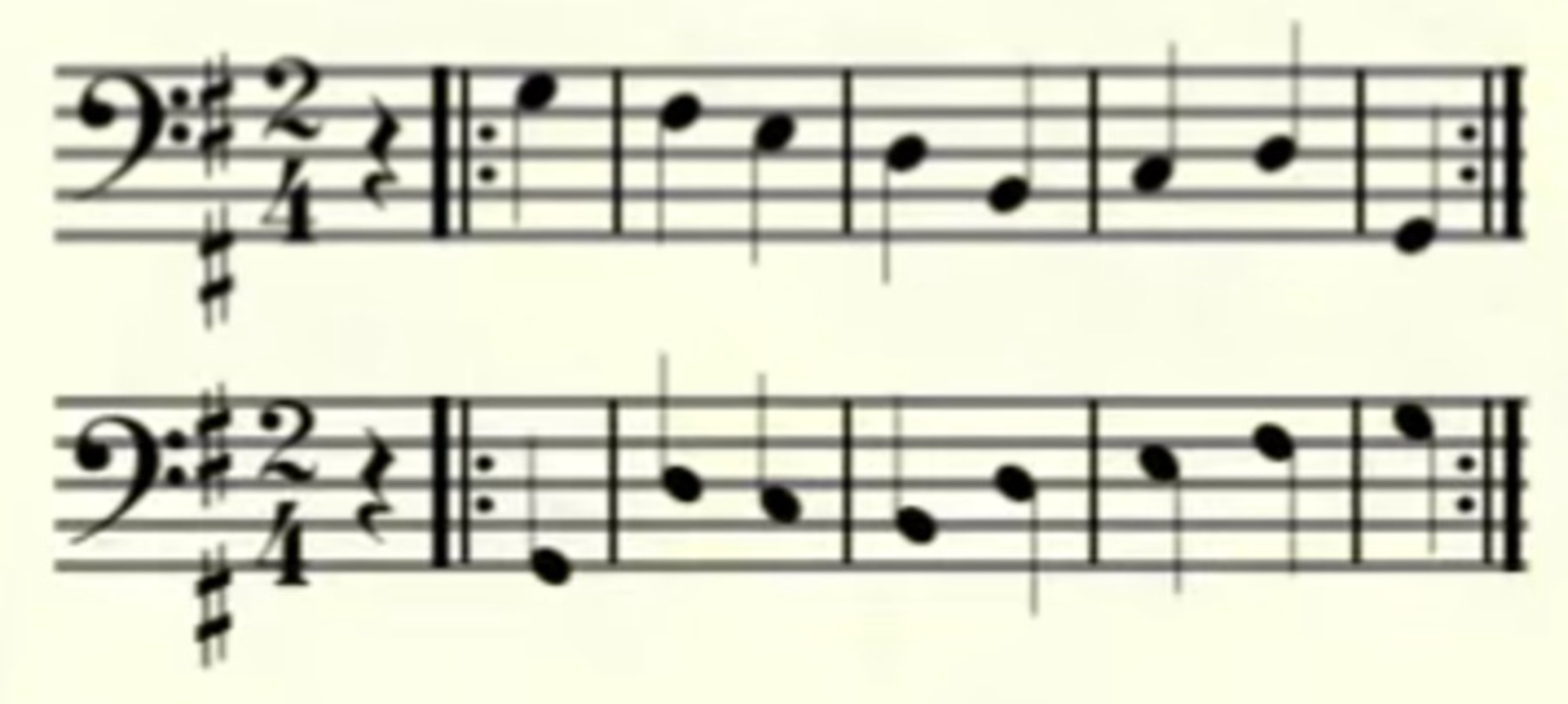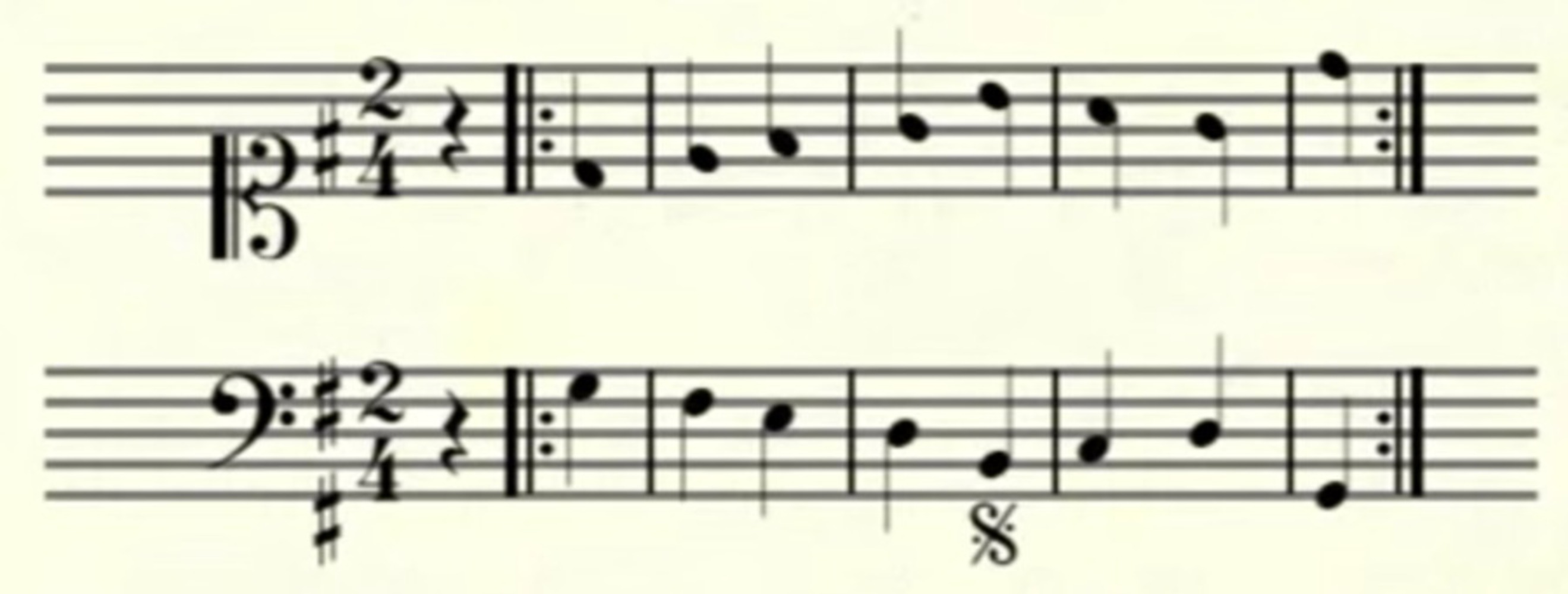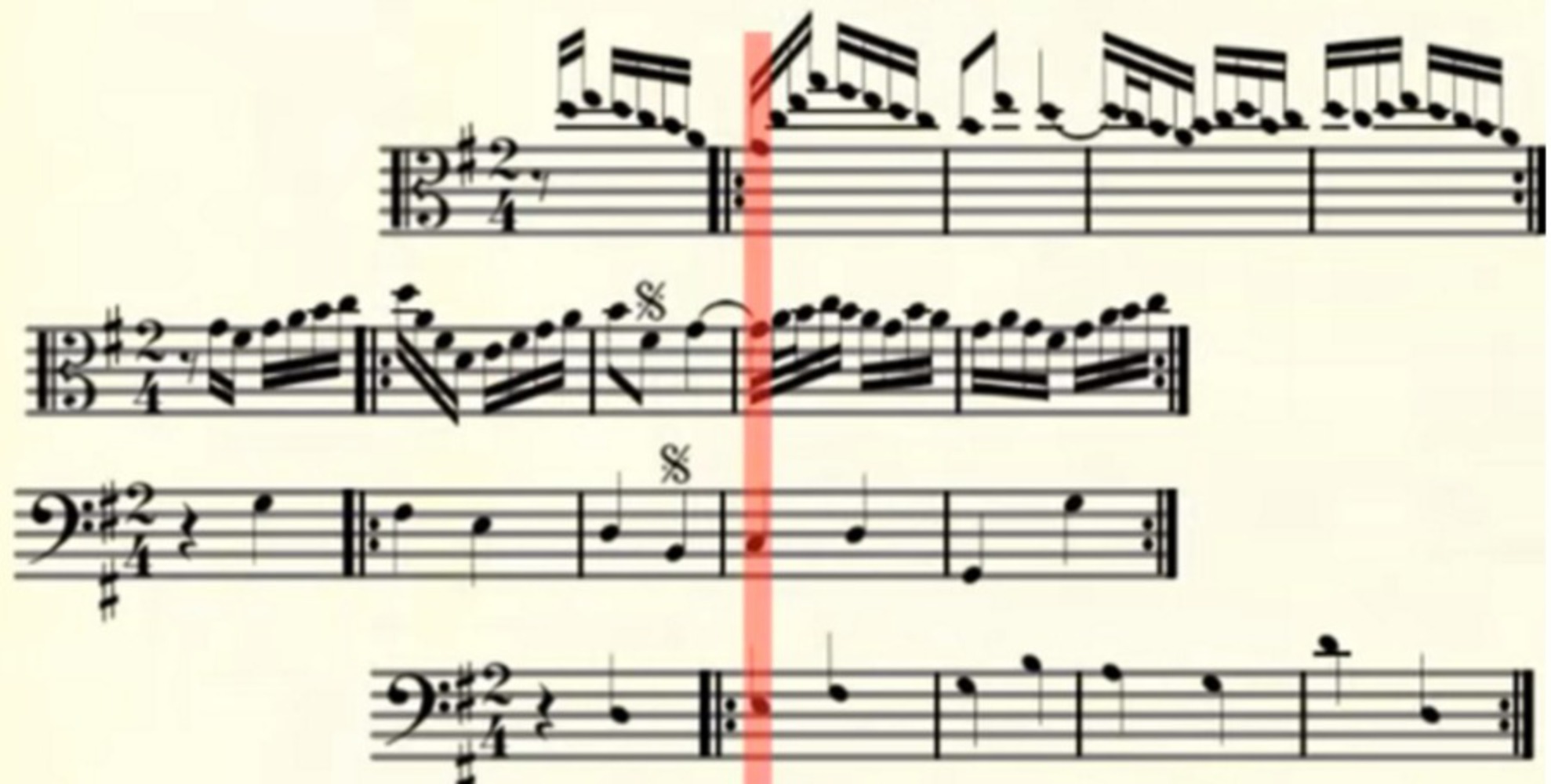Product: The work is made up of origami-paper-made pyramids, sticked altogether by double-sided tape. In one plane there are six pyramids and in the other there are ten. The first plane is a visual demonstration of the Canon Simplex basically via its structure. The pyramids are divided into two rows and lie in a reversed order. The reversed order could be told by the colors and sizes of the pyramids: each pyramid in the upper row pair up with one in the lower row of the same color and size. Similarly, another plane showcases the second rule introduced in the first section. The pyramids are also divided into two rows while lie in a mirrored order. What’s more, the first pyramid in the lower row attaches to the fifth one in the upper row, a pattern that hints the tempo is one-fourth slower.
Approach: M.C.Escher frequently used the mathematical concept and integrated geometric patterns in his creation, representationally like Waterfall and Ascending and Descending. Inspired by his works along with the collection of “Explosion of Sound Sculptures” in 2007, I decided to create a geometry-related piece which also echoes the mathematical aspect of Canons on the Goldberg ground. Pyramid came into my mind because it physically looks like notes. In a row, the pyramids vary in sizes and some of them turn upside-down. The arrangement helps make the structure more dynamic.
Reflection: Bach’s Goldberg Variation is well-known for its complicated techniques that place the notes in particular orders. The structure of my work is explicit and clear, capturing the essence of the musical piece. So I believe it is easy to build a connection with Bach’s Canons on the Goldberg ground, BWV 1087 after viewing my work. The problem is that I have not paid much attention to the material. The original patterns on origami paper is not related to the content of my work and thus may be a little disturbing. For the next time, I may use another material that could help strengthen the theme of my work.
Sources:
http://www.mcescher.com/gallery/recognition-success/waterfall/
http://www.mcescher.com/gallery/recognition-success/ascending-and-descending/
http://epicfu.com/blog/2008/08/hightech-sound-sculptures.html
http://www.plummerfernandez.com/Sound-Chair
Output:





